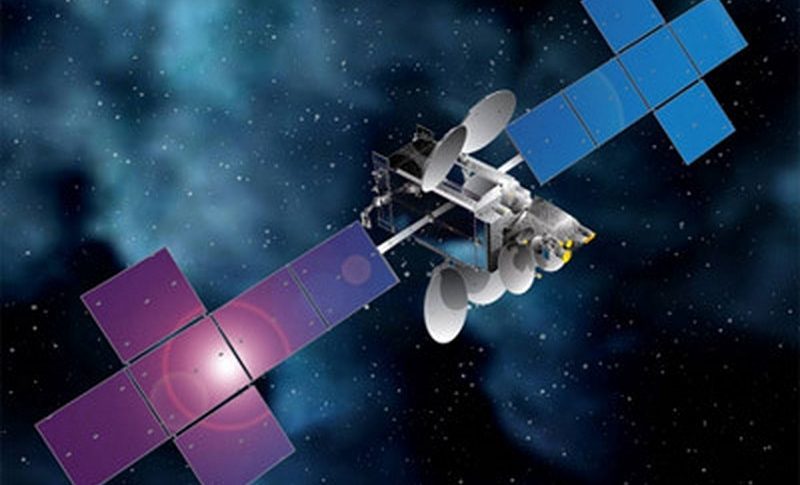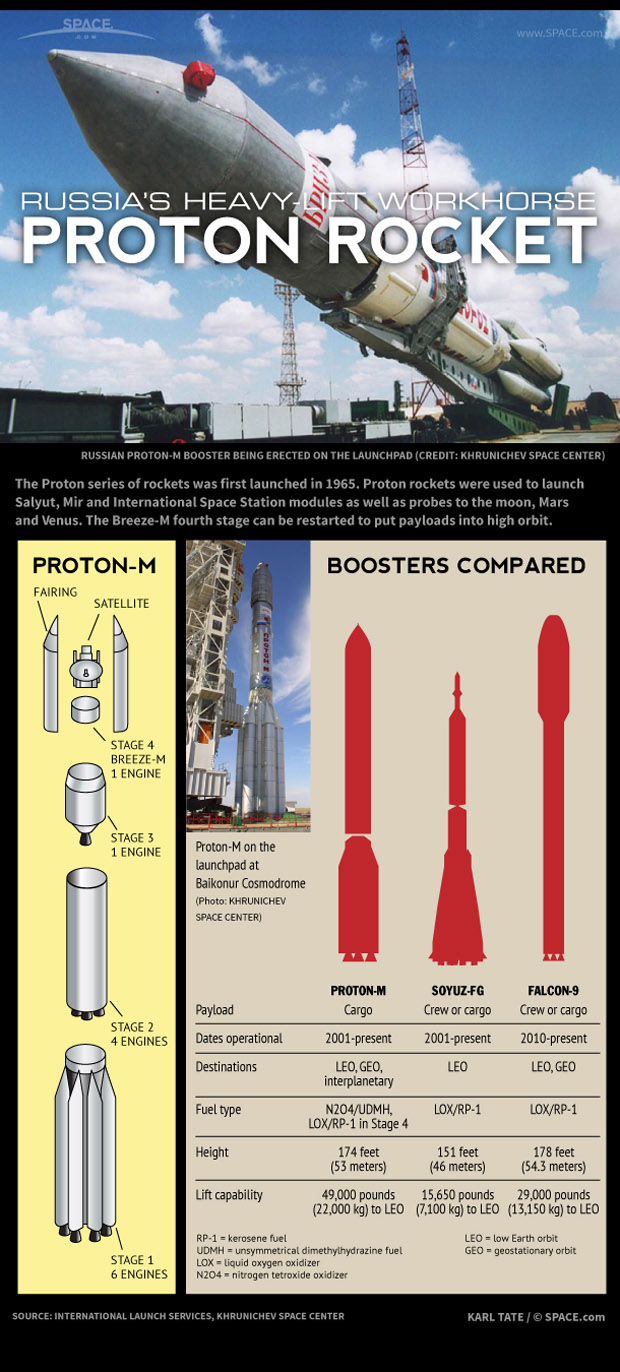Proton Successfully Launches Intelsat-31 Satellite Despite Lower-Stage Hiccup

PARIS — An International Launch Services Proton rocket, in the first flight of its latest and potentially final series of upgrades, on June 10 placed the Intelsat 31 commercial telecommunications satellite into geostationary transfer orbit.
Despite a problem with the rocket's second or third stage, one of which apparently underperformed, the Proton's Breeze-M upper stage was able to compensate with a longer burn sequence to insert the 6,450-kilogram satellite into the correct orbit.
Satellite fleet operator Intelsat said the satellite, built by SSL of Palo Alto, California, was healthy in orbit and sending signals after its release, some 15 hours and 31 minutes after liftoff, by the Breeze-M stage.

Intelsat-31 carries a Ku-band payload for Los Angeles-based DirecTV's Latin America division. DirecTV Latin America will keep Intelsat-31 as an in-orbit spare at 95 degrees west longitude. It will be co-located with the Intelsat-30 satellite, which was launched in November 2014 and is the principal satellite-television platform for DirecTV Latin America at the 95 degrees west slot.
Intelsat will use the four 69.6-megahertz C-band transponders for its own business in Latin America. Intelsat-31 is designed to provide 20 kilowatts of power to its payload at the end of its 15-year service life.
Luxembourg- and McLean, Virginia-based Intelsat said before the launch that depending on the precision of orbital injection, Intelsat-31 could hope for a service life of 20 years or more. It was not immediately clear whether the third-stage issue would force the satellite to use more fuel than expected to travel to its final orbital slot and limit its service life. Intelsat said initial indications were that there would be no reduction in service life.
Reston, Virginia-based ILS, which sells Protons globally for Moscow-based Khrunichev Space Center, expects Proton to remain on the market for another 10 years as Russian authorities gradually introduce the new Angara rocket family, whose heavier version is designed to replace Proton in the middle of the next decade.
Get the Space.com Newsletter
Breaking space news, the latest updates on rocket launches, skywatching events and more!
John Palme, ILS vice president for operations, said the latest Proton upgrade features lighter-weight, but stronger, metallic structures and high-precision tooling that, taken together, will permit Proton to launch an additional 150 kilograms into geostationary transfer orbit. That would mean a total satellite mass of slightly more than 6,300 kilograms.
ILS has said it is preparing Proton modifications to allow the rocket to attract owners of smaller satellites that would launch in pairs on a Proton. The commercial satellite market has bifurcated into both lighter and heavier satellites, especially as satellite fleet owners adopt electric propulsion. An all-electric satellite can weigh 50 percent less than the same satellite using conventional chemical propellant.
This story was provided by SpaceNews, dedicated to covering all aspects of the space industry.
Join our Space Forums to keep talking space on the latest missions, night sky and more! And if you have a news tip, correction or comment, let us know at: community@space.com.
Peter B. de Selding is the co-founder and chief editor of SpaceIntelReport.com, a website dedicated to the latest space industry news and developments that launched in 2017. Prior to founding SpaceIntelReport, Peter spent 26 years as the Paris bureau chief for SpaceNews, an industry publication. At SpaceNews, Peter covered the commercial satellite, launch and international space market. He continues that work at SpaceIntelReport. You can follow Peter's latest project on Twitter at @pbdes.










